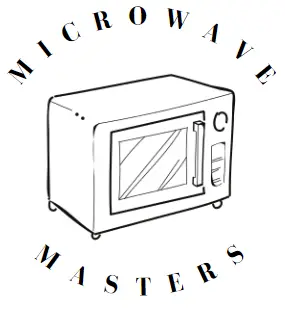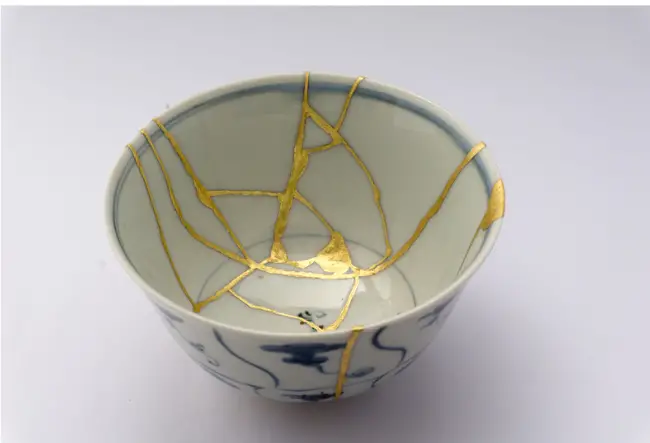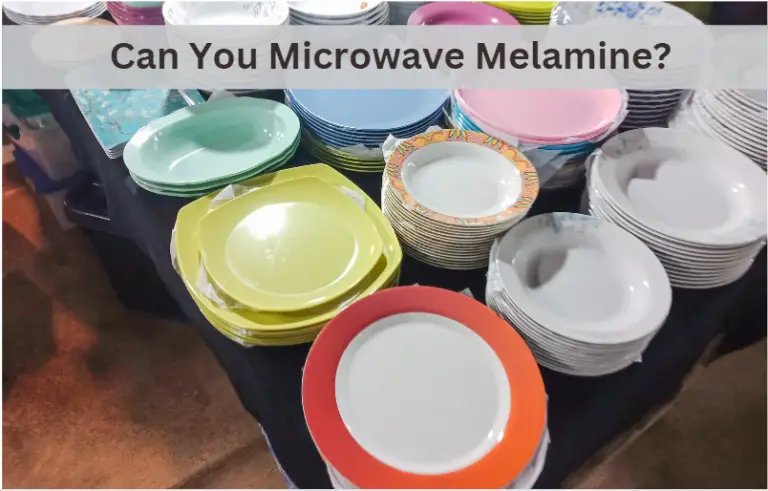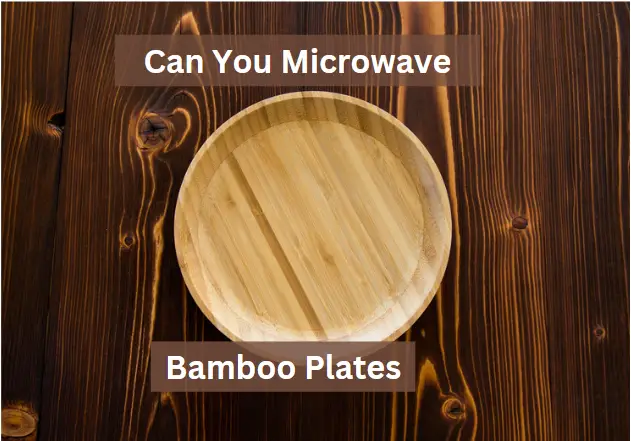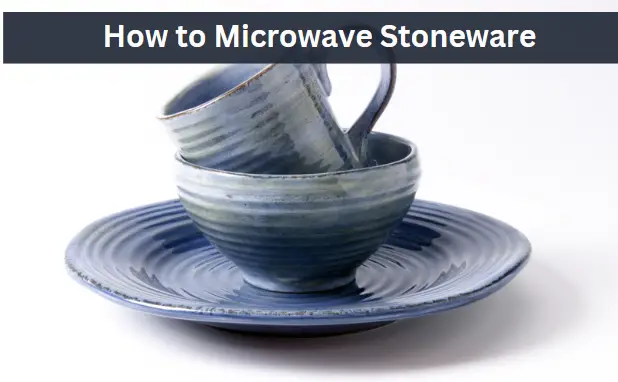Can You Microwave a Ceramic Bowl? How To Guide
Ceramic bowls can bring a lot of joy to your home. Whether you use them for meals, snacks, or decorations, their versatility can make it look like you have the most put-together kitchen around!
It all started with a simple question, can you microwave ceramic bowls? I can’t even begin to count the number of times I’ve been asked this! It seems that every time my friends and family come for dinner, the conversation turns to ceramic bowls. It’s almost like everyone is transfixed by this amazing material that can be used so many different ways.
And the majority of them just so happen to be microwave friendly too! We can use it for baking, heating up leftovers, soups, the possibilities are endless.
So, can you microwave ceramic bowls? You sure can! There are, however, some rules and things to look out for first though!
Let’s take a closer look.
Can You Microwave a Ceramic Bowl?
If you’re wondering whether it’s safe to microwave ceramic bowls, the answer is yes! In fact, there are several reasons why ceramic bowls are a great choice for heating up your food in the microwave. Here are four reasons why:
Ceramic is a safe material for microwaving
Ceramic is one of the safest materials you can use in the microwave. It’s an insulator, which means that it doesn’t absorb heat and won’t get too hot to handle. Plus, it won’t release any harmful chemicals or toxins when heated.
Ceramic bowls are versatile
Ceramic bowls come in a variety of shapes and sizes, making them perfect for all kinds of meals and snacks. Whether you’re heating up soup, leftovers, or even popcorn, there’s a ceramic bowl that will work for you.
Ceramic bowls retain heat well
Because ceramic is an insulator, it retains heat well. This means that your food will stay warm for longer after you’ve taken it out of the microwave.
Ceramic bowls are easy to clean
Ceramic bowls are dishwasher safe and easy to clean by hand as well. They don’t stain easily and won’t absorb any odors from your food.
Not all ceramic bowls are microwave safe though! It’s always best to double check the bottom for the microwave safe label. Never microwave a ceramic bowl that does not have this label!
Here are a couple reasons you shouldn’t microwave ceramics that are not microwave safe:
Absorption of Moisture
Some types of ceramic (earthenware especially) are porous and can absorb moisture, which can cause them to heat up quickly and potentially explode in the microwave.
Toxic Fumes
If the glaze on your ceramic dish contains lead or other toxic materials, microwaving it can release harmful fumes into your food.
How Are Ceramic Bowls Made?
Ceramic bowls are a popular choice for serving food due to their durability and aesthetic appeal. But have you ever wondered how they are made? Here is a brief overview of the process:
Step 1: Gathering Raw Materials
The first step in making ceramic bowls is gathering the raw materials. These include clay, earthen minerals, water, and sometimes other additives like feldspar and silica.
Step 2: Shaping the Clay
Once the raw materials are gathered, they are mixed together to form a clay body. The clay is then shaped into the desired form using various techniques such as throwing on a pottery wheel or hand-building.
Step 3: Drying and Firing
After shaping, the clay must be dried to remove any excess moisture. Once dry, it is fired in a kiln at high temperatures ranging from 1,000 to 1,200 degrees Celsius depending on the type of clay used.
Step 4: Glazing (Optional)
If desired, a glaze can be applied to the ceramic bowl before firing it again at lower temperatures. This gives it a smooth and glossy finish while also making it more resistant to scratches and stains.
And there you have it! A basic overview of how ceramic bowls are made.
Is it Safe to Microwave Ceramic Bowls?
If you’re wondering whether it’s safe to microwave a ceramic bowl, the answer is generally yes. Ceramic is one of the safest materials to use in a microwave, as long as there is no metal on the rim or in any decorative details. However, it’s always a good idea to check for any metallic trim or accents before microwaving your ceramic bowl. Additionally, ceramic bowls that are handmade or hand-painted may contain lead or other harmful materials that can leach into your food when heated in the microwave.
To be sure that your ceramic bowl is microwave-safe, look for labels that indicate it can be used in the microwave. If there are no labels, you can perform a simple test by placing the empty bowl in the microwave with a cup of water next to it. Microwave on high for one minute and check if the bowl is hot. If it’s not hot, then it’s safe to use in the microwave.
When using a ceramic bowl in the microwave, be sure to use oven mitts or a towel to handle it as it may become hot after heating. Also, avoid sudden temperature changes such as taking the heated bowl out of the microwave and placing it on a cold surface.
How to Test if Your Ceramic Bowl is Microwave Safe
If you’re unsure whether your ceramic bowl is safe to use in the microwave, there are a few simple tests you can do to find out.
- First, check for any labels or markings on the bottom of the bowl indicating that it is microwave safe. If there are no labels, go to the next step.
- Fill the ceramic bowl with water and place in the microwave alongside a Pyrex measuring cup or other microwave safe cup.
- Microwave on high for 20-30 seconds at a time. After each interval, check the temperature of the water and the bowl itself.
- After one minute, touch the ceramic bowl. If it’s hot while the microwave safe dish is cool, you should not use your ceramic bowl in the microwave. However, if both dishes are cool to touch, you can use your ceramic bowl in the microwave.
It’s important to note that not all ceramics are created equal when it comes to microwave safety. Some may contain materials that could potentially release harmful chemicals when heated in a microwave. Always err on the side of caution and follow these testing methods before using any ceramic dishware in your microwave.
How Long Can You Microwave a Ceramic Bowl?
If you’re wondering how long you can microwave a ceramic bowl, the answer is that it depends on what you’re heating up. Generally, it’s safe to microwave ceramic bowls for short periods of time, such as 1-2 minutes, but you should always check the manufacturer’s instructions to be sure.
Ceramic bowls are great for reheating leftovers or cooking quick meals like oatmeal or soup in the microwave. They come in a variety of sizes and styles, so you can find one that suits your needs and personal taste. Some even come with lids, which makes them perfect for storing leftovers in the fridge or freezer.
When using a ceramic bowl in the microwave, it’s important to use caution and follow some basic safety tips. For example, make sure the bowl is clean and free of any metal parts or decorations before microwaving. Also, use oven mitts or a towel to handle the bowl after microwaving, as it may be hot.
Overall, ceramic bowls are a convenient and safe option for microwaving food. Just be sure to follow the manufacturer’s instructions and use common sense when handling hot dishes.
Ceramic Bowls You Should Never Microwave
If you’re wondering whether it’s safe to microwave ceramic, the answer is generally yes. However, there are some cases where you should avoid microwaving ceramic. One reason is if the ceramic is cracked or chipped, as this can cause it to break or shatter in the microwave. Additionally, some types of ceramics are too porous and can absorb water, which can cause them to crack or even explode when heated in the microwave. It’s also important to note that not all ceramic dishes are created equal – some may be labeled as microwave-safe while others may not be. So if you’re unsure about a particular piece of ceramic cookware, it’s best to err on the side of caution and avoid microwaving it.
Related Post: Can You Microwave Ceramic Mugs? How To Guide
